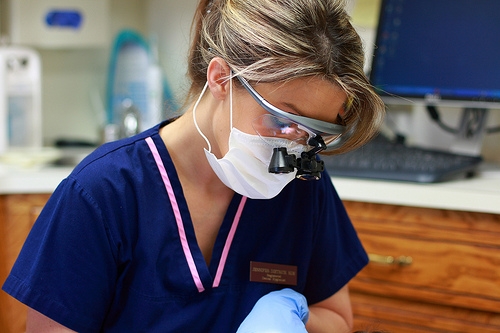VELscope® Oral Cancer Screening Available from Dr. Watkins
July 25th, 2013
 In our continuing efforts to provide the most advanced technology and highest quality dental care, Dr. Watkins and our team are proud to include the VELscope® Oral Cancer Screening System as an integral part of our comprehensive oral cancer screening program. Every hour of every day in the United States someone dies of oral cancer, which is the sixth most common diagnosed form of the disease. The 5-year survival rate is only 50 percent, and oral cancer is one of the few cancers whose survival rate has not improved.
In our continuing efforts to provide the most advanced technology and highest quality dental care, Dr. Watkins and our team are proud to include the VELscope® Oral Cancer Screening System as an integral part of our comprehensive oral cancer screening program. Every hour of every day in the United States someone dies of oral cancer, which is the sixth most common diagnosed form of the disease. The 5-year survival rate is only 50 percent, and oral cancer is one of the few cancers whose survival rate has not improved.
But there's a revolutionary device that provides our team with an easy-to-use oral examination system for the early detection of abnormal soft tissue. Clinical studies have determined that using VELscope after the standard oral cancer examination improves the dentist's ability to identify, evaluate and monitor suspicious areas at their earliest stages. Early detection of pre-cancerous tissue can minimize or eliminate the potentially disfiguring effects of oral cancer and possibly save your life.
So, how does it work? VELscope emits a safe blue light into your mouth, which causes the tissue to appear different colors through the viewfinder. This allows us our team to tell the difference between normal and abnormal tissue. Best of all, the procedure is quick, painless and potentially life-saving. Ask Dr. Watkins about a screening at your next appointment!




 Website Powered by Sesame 24-7™
Website Powered by Sesame 24-7™